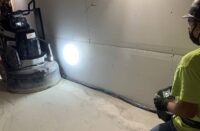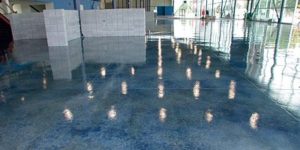The following is a small sampling of helpful hints shared at demonstrations sponsored by the Decorative Concrete Council during the recent annual meeting of the American Society of Concrete Contractors.
• Small cracks may be visible in stamped concrete after the release agent is rinsed. Apply water to the crack with a wet finger and lightly ping the crack closed with a flat-faced hammer.
• To avoid concrete setting too fast to be stamped, pour one-third of the batch and then add a step retarder to the remaining mix. Pour one-third more and add another step retarder before pouring the final third.
• Shut down HVAC, particularly underfloor heating systems, until stained concrete is completely cured. (This lesson was learned the hard way.)
• Before staining an existing slab, run a damp mop over it to show the customer imperfections such as footprints and birdbaths. These flaws will be greatly exaggerated by staining.
• Apply stains by spraying rather than brooming to avoid brush marks and puddles that will cause “burned” spots.
• Keep doors closed to prevent a draft from curing one section of a fresh interior overlay more quickly than the rest.
• Put reinforcement for countertops near the bottom of the slab, not the middle, to prevent ghosting of the reinforcement outline on the surface.
• Don’t set a countertop slab on a table to cure — the solid surface will prevent moisture from escaping evenly and the slab will curl.















